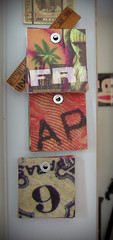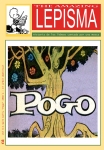LONDON, Sept. 26 - Eighty years after they were written, a previously unknown story and a handwritten letter ascribed to Ernest Hemingway have surfaced to stir a literary and legal dispute between people who want to see them published and people who don't.
At present, the opponents of publication - notably the custodians of the Hemingway estate - are winning, according to several people on both sides of the debate. But that has not detracted from the long, twisty tale of the documents themselves: a two-page letter and a five-page slapstick account of a bullfighting incident written in 1924. Not only do the documents offer an insight into the personality of a young Hemingway, scholars say, but they also illuminate the powerful appeal exerted by even modest discoveries of previously unknown writing by literary giants like Hemingway, who died in 1961.
The story - a thinly fictionalized sketch titled "My Life in the Bull Ring With Donald Ogden Stewart'' - and the letter cannot be published without the permission of the Hemingway estate, which has withheld it. But they can be sold, and will be auctioned in New York in December, according to Christie's, whose officials said the documents were expected to bring $12,000 to $18,000. None of the parties involved have raised questions about the documents' authenticity. The seller, who lives in Rome, is Donald Stewart, the son of Donald Ogden Stewart. What happens to the documents after the sale depends on whether the buyer is willing to permit access to the work by scholars or will try again to persuade the estate to permit their publication. What has happened to them in the past 80 years, though, seems an odd blend of history repeating itself and art mocking life.
"This is a piece of literary history, a wonderful find,'' Matthew J. Bruccoli, a scholar at the University of South Carolina who has written extensively about Hemingway, said in an interview. "It is lamentable that this very interesting piece of literary history is apparently interdicted from publication.''
The bullfighting episode was apparently inspired by an actual encounter in 1924 between Stewart, a well-known American author at the time, and an angry bull in Pamplona, Spain, where Hemingway had arranged for a group of friends to join him. Stewart was part of a literary set in the 1920's and 30's that included F. Scott Fitzgerald and others. He was a close friend of Hemingway during the 1920's and went on to write the Oscar-winning screenplay of "Philadelphia Story" in 1940. He was blacklisted in the McCarthy era and moved to London in 1950.
In 1924 he, John Dos Passos and others met up with Hemingway during the annual bullfighting fiesta, an event that would inspire Hemingway's 1926 novel "The Sun Also Rises.'' The undated letter from Hemingway to Stewart, on stationery from the Hotel Perla in Pamplona, sets out the arrangements for the trip. It also hints of long, delicious meals: he writes with "great difficulty," he admits at one point. "It is still three hours after lunch."
In his 1975 autobiography, "By a Stroke of Luck!," Stewart recalled spending days "excited, drunk, hot, hungover" in Pamplona. At one point, he wrote, he was helped into a bullring and handed a red cloak. "I found myself standing alone in the midst of an audience of thousands with the bull glaring at me from a distance of six feet,'' Stewart wrote.
Twice the bull tossed him. "I had been hit by a bull, and it was nothing,'' he wrote. "I had shown that I could take it. Ernest clapped me on the back, and I felt as though I had scored a winning touchdown.''
Subsequently, according to Stewart's autobiography, Hemingway sent him a humorous account of the incident, prefaced by his address: "Ernest Hemingway, 113 Rue Notre Dame des Champs, Paris, France.''
But Stewart, himself a parodist and humorist, was not impressed. "When he had sent me a 'funny' piece about myself to submit to Vanity Fair, I had decided that written humor was not his dish and had done nothing about it,'' Stewart wrote.
What happened afterward is unclear. According to his family, Stewart may have put the short story aside and ignored it. In any event, the typescript - a carbon copy - seems to have gathered dust until last year, when his son discovered it.
Mr. Stewart, 72, said the documents had been in an envelope that he inherited after his father's death in 1980 and had left untouched. "I hadn't bothered with it because it represented to me the enormous burden of having a famous father,'' he said in a telephone interview from Rome. By last year, though, he felt reconciled with his father's memory, he said, and after rereading his father's autobiographical reference to an unpublished Hemingway work he "resolved to cheerily plunder this envelope'' to search for it.
He sought to publish the documents in the modern Vanity Fair, with an article of his own. The magazine agreed, only to discover that the Hemingway estate had refused permission for publication, Wayne Lawson, the executive literary editor of Vanity Fair, said. "So for us, that was the end of it,'' he said in a telephone interview from New York.
The documents fall into a quirk of copyright law. While the text may not be published without the permission of the Hemingway estate, the letter and typescript may be sold as artifacts, according to Patrick McGrath, a books and manuscripts specialist at Christie's in New York.
Mr. McGrath said the auction house had authenticated the letter as written in Hemingway's hand. The five-page carbon copy of the story has also been authenticated, he added, because of its provenance and because the words "The End" were in Hemingway's handwriting.
It is not clear why permission to publish the documents was withheld. According to Mr. Stewart, the Ernest Hemingway Foundation granted him permission to publish the story and the letter in return for $500. The foundation, representing scholars and enthusiasts, is a legal entity endowed with some rights over unpublished Hemingway material, said Prof. Gerald Kennedy, its vice president and an English professor at Louisiana State University in Baton Rouge.
But under an agreement reached in 1983 after the death of the author's widow, Mary Hemingway, joint permission from the foundation and the estate is required for the use of any previously unpublished material.
Simon & Schuster, which has held the rights to Hemingway's published work since it took over his original publisher, Scribner's, in 1994, also acts as an intermediary between the estate and people seeking to publish his writings. In an e-mail message to Mr. Stewart on Sept. 10, Lydia Zelaya, a permissions editor at Simon & Schuster, wrote: "The estate does not permit such publication. Therefore publication of this material anywhere in the world is prohibited.'' The text of her message was made available by Mr. Stewart.
A Simon & Schuster executive said the publisher had merely relayed a decision by the Hemingway estate.
The estate's denial of permission effectively canceled Professor Kennedy's decision to approve publication of the documents. "We were happy with the prospect of some new work by Hemingway coming into the public view,'' he said. "But the family had other considerations, and I can't speak for them."
Professor Kennedy said he did not doubt the story's authenticity. "The piece surprised me because I had not known about it at all,'' he said.
He said the story was characteristic of the kind of humorous material that Hemingway was writing "on the side'' while he was in Paris in the mid-1920's. "It's very much in the spirit of tongue-in-cheek, over-the-top humor,'' he said.
Thanks To By Alan Cowell NYT
Monday, September 27, 2004
Subscribe to:
Comments (Atom)





























































